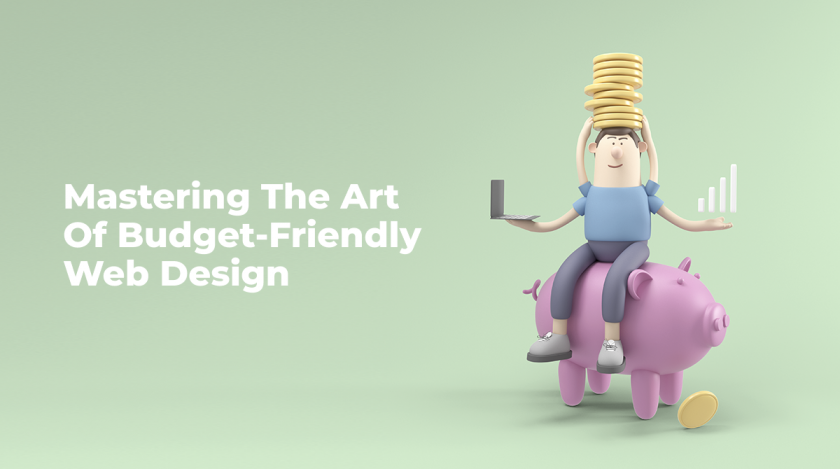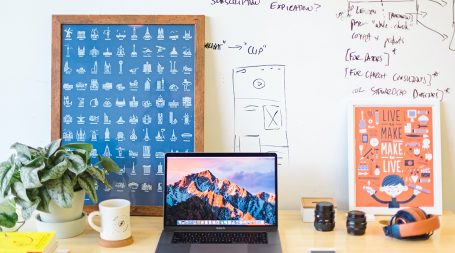In today’s digital age, your website is often the first point of contact between your business and potential customers. According to a study by Stanford University, 75% of users judge a company’s credibility based on its website design. However, crafting a practical and appealing web design doesn’t always require a lavish budget. In fact, with careful planning, creativity, and the assistance of a budget SEO provider, businesses can strike a fine balance between cost and quality in web design.
In this article, we delve into the art of designing on a dime, exploring practical strategies, clever techniques, and cost-effective tools that enable you to create stunning websites without breaking the bank. Whether you’re a small business owner, a freelancer, or a passionate individual seeking an online presence, join us on a journey of discovering how to master the art of budget-friendly web design.
Understanding the Essentials: What Makes a Good Budget-Friendly Web Design?
Before delving into cost-effective strategies, it’s important to understand the fundamental elements of good web design. These include usability, aesthetics, mobile compatibility, load speed, and SEO-friendliness. According to Adobe, 38% of people will only engage with a website if the content or layout is attractive. Thus, prioritizing these elements not only enhances user experience but also contributes to your website’s visibility on search engines.
Using DIY Website Builders: A Cost-effective Approach
For businesses on a tight budget, DIY website builders like WordPress, Wix, or Squarespace offer a cost-effective solution. These platforms provide a plethora of templates that cater to various industries and design preferences. Furthermore, they come equipped with user-friendly design tools and features, enabling you to create a professional-looking website with little to no coding knowledge. However, while these platforms are affordable and convenient, it’s crucial to customize the templates to make your website unique and aligned with your brand identity.
Investing Wisely: Prioritizing Essential Features
In web design, less can often be more. Overloading your website with features not only increases costs but can also lead to a cluttered and confusing user interface. A survey by HubSpot revealed that 76% of consumers say the most important factor in a website’s design is that “the website makes it easy for me to find what I want.” Therefore, it’s essential to focus on features that enhance usability and drive conversions, such as intuitive navigation, clear calls-to-action, and a streamlined checkout process for eCommerce sites. Investing wisely in these key areas can provide a higher return on investment than splurging on non-essential features.
Harnessing the Power of Visual Hierarchy
Visual hierarchy is a cost-effective way to guide users through your website and lead them to take desired actions. By arranging elements according to their importance (using size, color, contrast, and positioning), you can draw attention to key messages or calls to action without relying on expensive design elements. This can be particularly beneficial for small businesses or startups that can’t afford professional graphic design services.
Leveraging Free or Low-cost Resources
There’s a wealth of free or low-cost resources available that can significantly reduce web design costs. These include free or affordable stock image websites, icon libraries, and Google Fonts. Additionally, free online tools can help optimize images, create graphics, or generate color palettes. However, remember to respect copyright laws and only use resources that are labeled for commercial use.
Ongoing Optimization: The Role of A/B Testing
Web design is an ongoing process. It’s essential to continually test and optimize your website to improve performance and user experience. A/B testing, for instance, can help identify which design elements are most effective in driving conversions. While this might require an investment in an A/B testing tool, the insights gained can help improve your website’s effectiveness and ultimately, your bottom line.
Ensuring Mobile Compatibility: Responsive Design on a Budget
In a world where over 50% of web traffic comes from mobile devices, according to Statista, ensuring your website is mobile-friendly is not an option; it’s a necessity. Fortunately, most DIY website builders offer responsive templates that automatically adjust to different screen sizes. This not only improves user experience but can also boost your website’s search engine rankings, as Google uses mobile compatibility as a ranking factor.
Speed Matters: Optimizing for Faster Load Times
Page load speed is a critical factor in web design. A study by Google found that 53% of mobile site visits were abandoned if pages took longer than three seconds to load. Slow websites not only frustrate users but can also hurt your SEO. However, optimizing for speed doesn’t have to be expensive. Simple strategies such as compressing images, minimizing the use of heavy scripts, and leveraging browser caching can significantly improve load times. Tools like Google’s PageSpeed Insights can help identify areas for improvement and are free to use.
Cost-effective SEO: Maximizing Visibility within Budget
While good design is crucial, it’s equally important for your website to be found by search engines. This is where a budget SEO provider can be invaluable. SEO involves various on-page and off-page strategies, including keyword optimization, creating quality content, and building backlinks. According to a survey by BrightEdge, organic search drives 51% of all web traffic. Thus, investing in SEO, even on a budget, can significantly increase your website’s visibility and traffic.
Harnessing User Feedback: Cost-effective Website Improvement
Finally, don’t underestimate the value of user feedback in improving your website design. User feedback can provide valuable insights into potential issues or areas for improvement that you might have overlooked. Tools like website surveys or feedback widgets can be cost-effective ways to gather user opinions. Even informal feedback from friends, family, or colleagues can be helpful in identifying areas for improvement.
Budget-Friendly Web Design Conclusion
Creating an impactful, user-friendly website on a budget may seem like a daunting task, but as we’ve seen, it’s entirely achievable with the right approach. By understanding the fundamentals of good web design, harnessing the power of cost-effective tools and resources, focusing on high-impact areas like mobile compatibility and load speed, and investing in budget-friendly SEO, businesses can indeed strike the perfect balance between cost and quality.
However, the journey doesn’t end with the launch of the website. Continual monitoring, testing, and optimization, guided by user feedback and performance metrics, are crucial to ensure that your website remains effective and relevant in the ever-evolving digital landscape.















